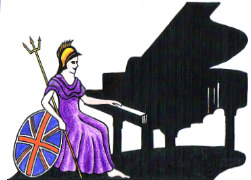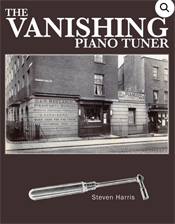Qualifying from three years study at the Royal National College for the Blind, during this time winning the Europiano prize in 1975. 
In July 1976 I went to work in Rye, East Sussex, as a newly qualified piano technician with a City and Guilds and CTB. Diploma.
During 1980 to 1981, sponsored by an Arts Council bursary I spent a year at Steinway Hall in London training in the preparation of pianos for concert work.
Moving to Manchester in 1981, I started my own business.
Building up my largest client base in Cheshire and Lancashire, I tune pianos five days a week. Travelling to North Wales and the Lake District by request.
To date working for 20 years as piano technician for Manchester University, many churches, North-West Arts, Stockport Symphony Orchestra, and a wide range of professional musicians and piano teachers.
Martin is also on the recommended list for The Piano Tuners Association and The Blind Piano Tuners Association, and has worked internationally to represent these organisations in addition to acting as an examiner of piano tuners.
By 1989 I opened my own shop 'Piano House' at Barlow Moor Road, Didsbury. Retailing a wide range of pianos.
Dedicating a total of 30 years to date studying and working with pianos.




